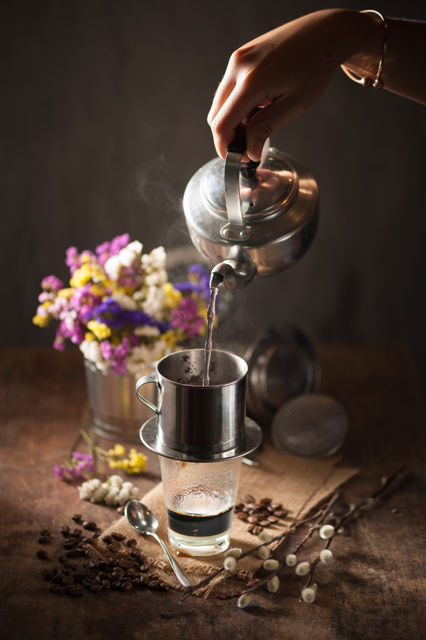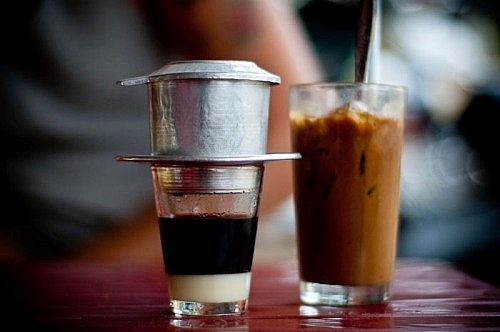Ho Chi Minh City is in the top 10 destinations to enjoy coffee
According to international visitors, Ho Chi Minh City is ranked 7th, famous for tourists because of its
Espresso and Vietnamese traditional phin filtered coffee-making methods have their own strengths and shortcomings
A popular drink in Vietnam, phin filtered coffee is considered an inseparable part of Vietnamese culture. With globalization, espresso, a brewing method of Italian origin, was imported into Vietnam and is becoming increasingly favored by coffee lovers in the country. So how does coffee made with Vietnam's traditional brewing method differ from that produced with an espresso machine?
Extraction methods
Espresso machines brews coffee by forcing a small amount of nearly boiling water (about 90 °C) under high pressure to extract the pure essence of finely ground coffee beans in just 25 – 30 seconds. Due to the pressurized brewing process, the flavors and chemicals in a cup of espresso are concentrated.
Meanwhile, the Vietnamese phin filter extracts coffee by letting hot water (around 80 - 90°C) drip through ground coffee. The phin consists of a round holed plate that fits over a coffee cup, a brewing chamber sitting on top of the plate, a perforated insert that fits inside the chamber to press the coffee down, and a cap to retain the heat inside the chamber. After ground coffee is added to the chamber, the filter insert is twisted down. Water is then pour on top twice, before and after blooming. The cap keeps the heat inside as the first drips descend into the cup below. The amount of time it takes to yield a full cup of coffee using phin filters is much longer, about seven to ten minutes.
Making coffee using phin filter is a brewing method is part of Vietnamese coffee culture. For many people, enjoying a good cup of phin filtered coffee is a must-do every morning.
Although making phin filtered coffee takes much longer, many coffee lovers adore the indescribable feeling waiting for each drop of coffee to drip into the cup and enjoying the intense coffee aroma that slowly engulfs the air.
Perhaps this is why phin filtered coffee is considered by many as a drink for those who love simplicity, leisure and gentleness. Espresso, meanwhile, is reserved for those who enjoy speed and convenience.
Appearance and flavor
Coffee made with phin filtering and espresso, the two vastly different coffee-making methods, doesn’t have the same appearance and flavor.
Espresso coffee uses Arabica coffee. After extraction, a brown, caramel-like foam called crema appears on the surface of the coffee cup as a result of high pressure, carbon dioxide, and other compounds in the espresso machine. A cup of espresso coffee has an attractive aroma and the refined, slightly sour, and bitter flavor characteristic of Arabica. Once swallowed down, espresso coffee leaves a pleasant, sweet aftertaste at the back of the tongue.
Phin filtered coffee, on the other hand, mostly uses Robusta. You won’t see light brown foam (crema) appear on the surface of a cup of phin filtered coffee as you can see with espresso. A phin filtered coffee cup has a dark brown color and thick consistency.
As it uses a lot of Robusta, phin filtered coffee’s bitterness is much more pronounced. After taking a sip of phin filtered coffee, however, you will feel a sweetness lingering at the back of your mouth. Some people prefer to add ice, sugar, or condensed milk to reduce the bitterness of phin filtered coffee.
Although they are different in many aspects, both espresso and phin filtered coffee have unique traits that can satisfy coffee lovers. If you have a chance, try both of these coffee types. You will be able to discover your favorite coffee and feel the differences between espresso and phin filtered coffee.
Sophie Tran

